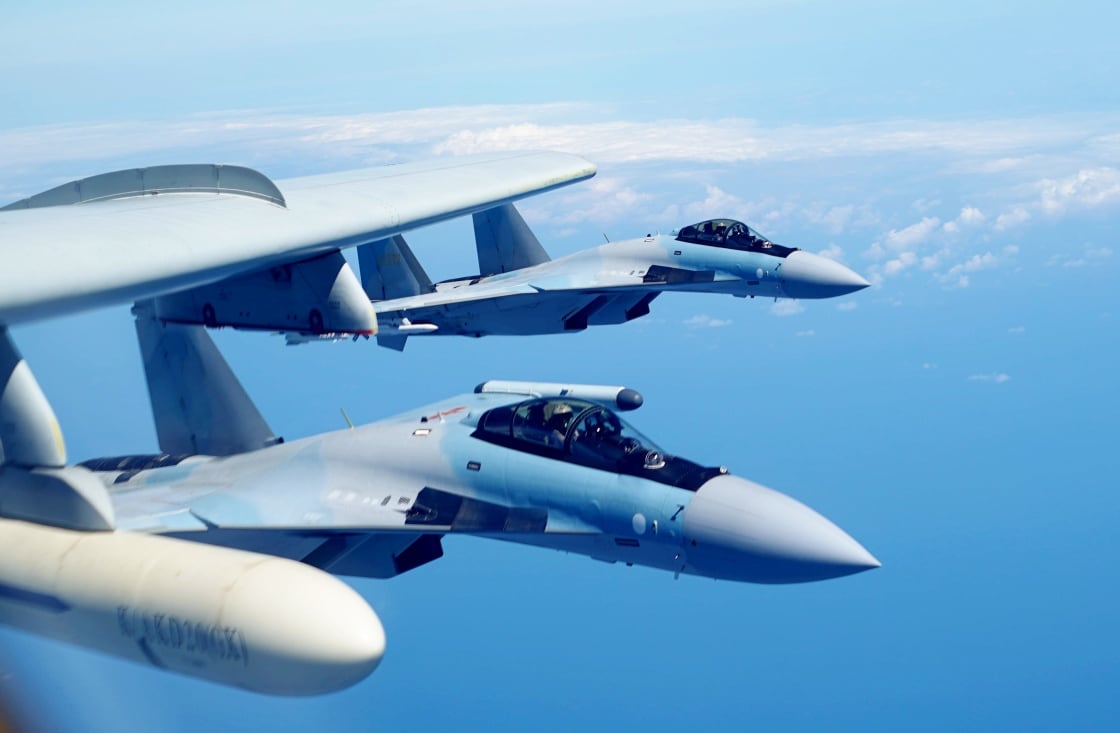MELBOURNE, Australia – China has landed strategic bombers on an airfield in the South China Sea for the first time, in what its defense ministry says will enable its bomber crew to gain experience in operating from airfields built on islands and reefs.
In a media release, the Chinese Ministry of National Defense said several bombers of various types, including the improved Xian H-6K, carried out landing and take offs at an island airfield following simulated strikes on targets at sea.
Video released by the ministry showed the bombers from the 36th Bomber Division of the People’s Liberation Army Air Force or PLAAF carrying out touch and go landings as well as missed approaches on the airfield. Based on the runway orientation and other infrastructure seen in the video, Defense News has verified that airfield is at Woody Island in the Paracels chain, and not the airfields China has built on the reclaimed islands in the disputed Spratly Islands further south.
RELATED

The 36th Bomber Division is assigned to the Northern Theater Command and is based at airfields in northern Shaanxi Province although the ministry said that the aircraft operated out of an airfield in southern China for this exercise. The division’s home bases are approximately 1,200 miles from Woody Island, within the reported 2,200-mile combat radius of the H-6K.
The H-6K is an upgraded variant of the H-6, which is itself originally a Chinese-built version of the 1950s-era Soviet Tupolev Tu-16 Badger. The H-6K has been re-engined with Chinese-built versions of the Russian D-30KP low-bypass turbofans and improved avionics that include a new indigenously-developed radar and is used primarily as a cruise missile carrier in PLAAF service, utilizing the KD-20 or KD-63 cruise missiles on six wing hardpoints.
The PLAAF currently has three divisions flying the H-6K, with China’s Northern, Eastern, and Southern Theater Commands each assigned a division of bombers.
China is also said to be developing a nuclear-capable air-launched ballistic missile for the H-6K, with sources close to the U.S. intelligence community saying that flight tests have been carried out for the unnamed new missile, which has been dubbed as the CH-AS-X-13 by U.S. intelligence. The missile is a two-stage, solid-fuel ballistic missile with a 1,900-mile range, according to a report in The Diplomat earlier this year and will be carried by a new variant of the H-6 that is being developed for the PLAAF.
The new variant, known as the H-6N, will be an improved H-6K fitted with air-to-air refuelling capability. Flight tests of the H-6N are currently said to be in progress, with unverified photos posted on the Chinese internet showing prototype aircraft in flight. Taken together, an air-refuellable bomber and a nuclear capable air-launched ballistic missile will significantly improve China’s modest nuclear capability, which is built around a retaliatory doctrine backed by a longstanding pledge of no-first-use.
Mike Yeo is the Asia correspondent for Defense News.








